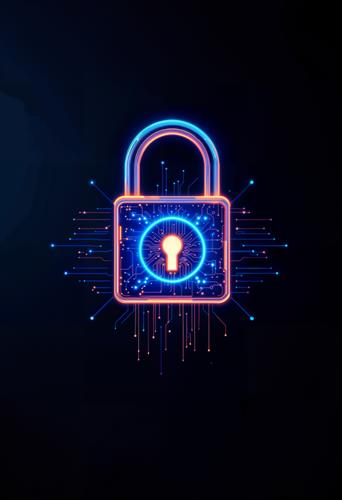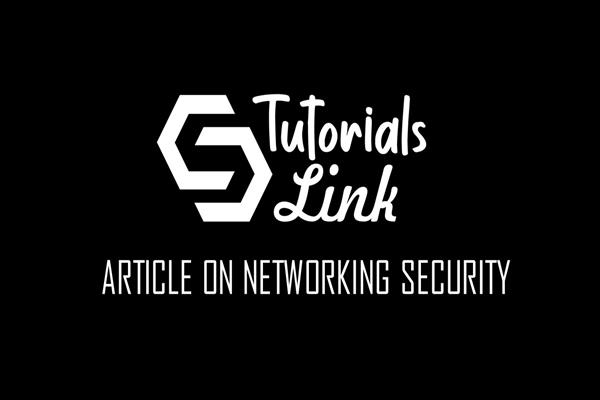Top Cybersecurity Practices in 2025: A Guide to Counter Business Threats

In the year 2025, cyber threats are not just increasing in volume, they are improving in terms of complexity. If we talk about the AI-generated phishing scams to the misleading information's, businesses of all the domains must think of changing their security strategies. Thus, here’s where the modern cybersecurity solutions come into action!
It's not just mere firewalls or any antivirus software, cybersecurity solutions now consist of a full variety of AI-driven detection, safe remote access, management of the identity and the training of an employee. If you are an enterprise or a growing SaaS startup, the capability to analyze and counter cyber threats is the most important part of business continuity.
- A Massive Change from Reactivity to Proactive Security
The most conventional systems are reactive after the attack occurs. In the year 2025, the shift led to proactive defense mechanisms. With the usage of machine learning and behavioral analytics formed into modern cybersecurity solutions, companies can now analyze unusual activities which turn into breaches.
Cyber security solution providers mainly present tools along with real-time monitoring and predicative indications. This helps the teams to function on the potential threats rapidly as compared to the damage that has occurred.
Initiate a security audit Now with the trusted cyber security solution providers to analyse and fix the faults in your system.
- Zero Trust Model is Now In!
The theory of “Never Trust” and “Always Verify” has always become the condition! Inspite of granting the blanket access, Zero Trust models enables the continuous authentication all over the users, devices as well as the services.
Mainly for companies with distributed workforces, with the implementation of the Zero Trust which helps safeguard sensitive information from internal danger and lateral movement attacks. Most of the cybersecurity solutions include built-in Zero Trust tendencies, making the deployment much easier for even non-enterprise level organizations.
3.Safeguarding Distant and Hybrid Teams
With distant work presently a permanent model for most of the SaaS and digital-first businesses, endpoint security is extremely necessary as compared to the others. Devices outside the internal network are mostly the weakest links.
This makes remote team building for SaaS companies not just an HR challenge, but a cybersecurity priority. When you hire non tech teams for SaaS business, it’s essential to ensure that remote onboarding includes security awareness training and compliance with your protection protocols.
- Employee Education is a Cybersecurity Necessity
That’s why top cyber security solution providers now include training modules as part of their services. This includes simulated attacks, best practices for password management, and safe remote work habits falling for the phishing emails to making use of the weak passwords, the untrained staff poses a major risk.
Thus if your business is growing at a faster rate, mainly with the remote team building for SaaS companies, ensure that the cybersecurity is a central part of your team’s onboarding as well as the ongoing development.
- AI and Automation in Threat Detection
Current cybersecurity solutions enhance artificial intelligence to analyze the threats across the large datasets. It is not just about the efficiency- It is about the detection of what the human eye cannot!
AI systems now identify behaviors all across the cloud services, apps, emails and the usage of the device. It combines with automation, businesses can at once isolate compromised devices and disable suspicious accounts or trigger alerts.
Don’t delay and wait for a cyber-attack. Partner with the known cyber security solution providers to integrate the AI based defense into your infrastructure. - Third-Party Risk Management and Vendor
At the interconnected digital ecosystem, your vendors can be your weak security link. It's the compromised partner who can create a backdoor into your system.
In the year 2025, best practices presently require businesses to understand the cyber hygiene of each vendor. It mainly includes the compliance audits, access control and legal agreements in sync with cybersecurity standards.
7.Cloud Security- A Strategic Priority
SaaS businesses rely heavily on cloud-based platforms. Securing these environments is non-negotiable. From encryption-at-rest to multi-factor authentication, your cloud stack needs to be hardened end-to-end.
Cybersecurity solutions tailored for cloud-native companies offer configuration scanning, access logs, and container security—essential for growing, distributed SaaS teams.
8. Agentic AI–Powered Security Operations
In the year 2025, cybersecurity operations are rising at a great pace with agentic AI-autonomous decision-capable systems to augment with the human teams. Security Operations Centers mainly integrate AI to handle tier-one and two-tier tasks such as alert arrangement and early forensic investigations. This helps to free any human analysts to analyze complex threats thereby increasing the overall response accuracy and speed.
The cyber security solution providers mainly offer AI-driven threat analysis tools to improvise SOC efficiency and management of threat.
- Quantum-Safe Cryptography & Crypto Agility
With the increase of quantum computing, conventional encryption is at risk. The forward-looking organizations are taking up post-quantum cryptography, algorithms which are created to withhold the quantum enabled attacks and creating crypto agility into the systems so one can immediately take-up new cryptographic standards
Bring up a cryptographic audit, start with the transitioning to the quantum resistant algorithms and make up for the agile updates to cope up with the pace with the emerging standards. - Continuous Exposure & Attack Path Management
Conventional vulnerability scans are not enough anymore. Organizations are bringing into practice Continuous Exposure Management (CEM); platforms which continuously analyse, simulate and make exposure a priority all across on-prem, cloud and hybrid environments. By identifying the potential attack paths, CEM helps the team to mainly focus on identifying the most critical weaknesses proactively. Identify CEM tools to uncover and make hidden vulnerabilities a priority and integrate them into the cyber resilience strategy. - Securing the Expanding IoT & 5G Attack Surface
As businesses increasingly adopt IoT devices and roll out 5G‑enabled systems, each new endpoint becomes a potential entry point for attackers. In 2025, a staggering 45% surge in IoT malware incidents has been observed, and vulnerabilities in 5G infrastructure—such as network slicing and unsecured device firmware—are already being exploited.
Since businesses have increasingly taken up IoT devices and also rolled out 5-G enabled systems, every new endpoint have become a potential entry point for all the attackers. In the year 2025, a dramatic increase in IoT by 45% has been identified and vulnerabilities have been observed in the 5 G structure. For instance; network slicing as well as the unsafe device framework are already been exploited.
Key Properties mainly involves:
- Implementation of the security-by-design- by the emendment of the encryption, secure boot and also take care of the firmware integrity checks before any kind of deployment.
- Making use of the Zero Trust Techniques with granular micro-segmentation, vigorous device attestation and behavioral monitor.
- Integration of the vendor security teams to make sure compliance with the evolvement of 5G device standards and updates on time.
Regular audit of all the live IoT devices and the endpoints which are 5G connected. Deployment of the patches promptly and also mandate the stress allowance controls to avoid unauthorized access or tampering.
- Strengthening Identity Threat Detection & Response (ITDR)
Presently in the year 2025, it brings enhanced sophistication in credential-based cyber-attacks, mainly including phishing, vishing or account takeover attempts. Conventional IAM systems are no longer of much use. The organizations mainly want robust identity Threat Detection and Response (ITDR) solutions to analyze and also defend against any identity-focused threats in the present time.
Main features of ITDR mainly includes:
- Continuous validation of the credentials, monitoring of the suspicious logins and the privilege escalations.
- Analyzing phishing, misuse of the token, insider threats and privileged abuse.
- The concise integration with Zero Trust models and MFA infrastructures.
Check out the ITDR tools alongside IAM and MFA deployments. Configure the unusual behavior which is like off-hours logins or the lateral access attempts and make sure ITDR logs feed into the SOC workflow for an immediate action.
- 13. Make Sure to Keep the Software Updated Automatically
Why does it matters:
Cybercriminals mainly exploit the known vulnerabilities in the outdated software to attain unauthorized access. One can update the operating systems, app software and firmware automatically which ensures that you are protected against the known weaknesses. Such simple steps eradicate the burden of any manual updates and importantly decrease the risk.
Immediate Tip:
Instant Tip:
Enable the automatic updates whenever possible mainly including on the computers, routers and any of the business apps. Most of the vendors support this by default. Such small action helps your business stay stagnant without any effort.
- Safe Wi-fi Networks with Strong Encryption
Why is it significant?
Your Wi-Fi network is mainly a gateway into the business systems. If it is unsecured, cybercriminals can easily intercept the data or infiltrate the network. Safeguarding it helps in the protection of the internal systems from any unauthorized access.
Quick Suggestion
Make use of the latest Wi-Fi encryption standard-WPA3 if it's available, otherwise WPA2. You need to change the router’s fault password and wherever possible hide your network name (SSID). You need to separate guest network for the visitors to keep their businesses isolated.
Final Thoughts
Cybersecurity is no longer considered the sole domain of IT departments. In 2025, it is shared responsibility all across marketing, HR, ops as well as leadership. Once you grow, you need to be intentional and not just about your tech stack, but also your structure. Smart hiring, robotic protocols and trusted cyber security solution providers are your most effective defense.





